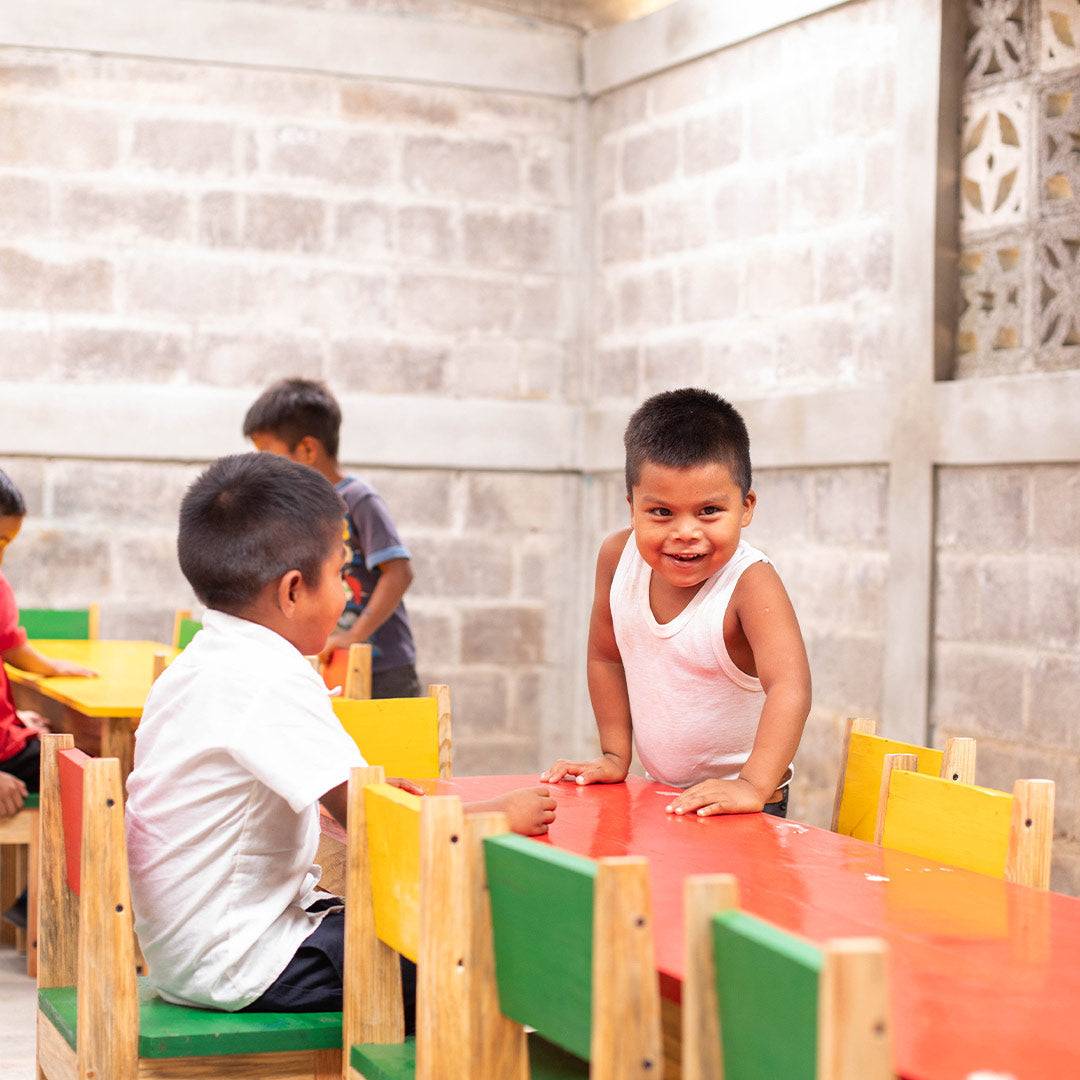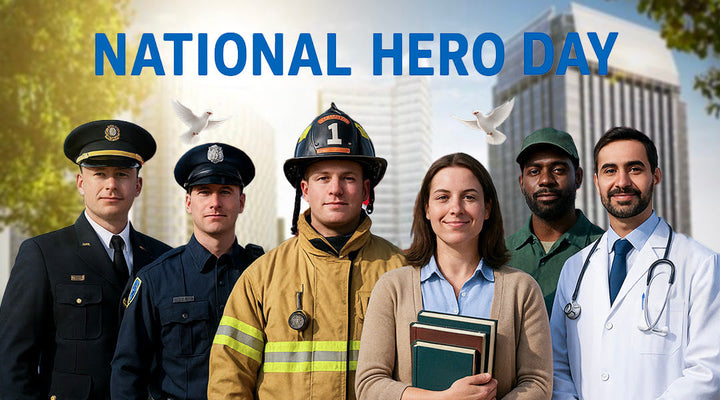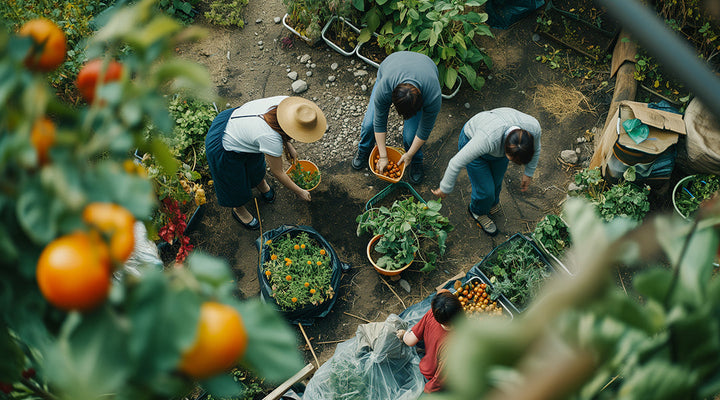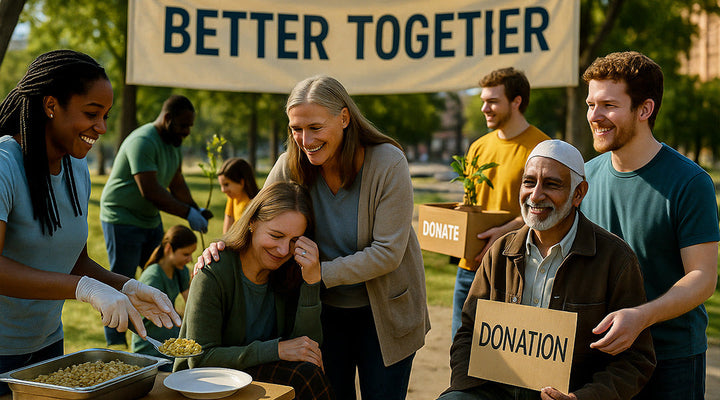
Project Alianza - Building Schools Or Changing Lives, You Decide
Today is an exciting day!
Right here, right now, we are privileged to share with you some incredibly life-changing information!
This isn’t about coffee. This isn’t about your health.
No, today we’re sharing the details of the opening of La Bailadora, the newest school opened deep in the coffeelands of Nicaragua.
But, as we detail our partnership with Project Alianza here, in opening the newest school in the region where our coffee farmers live and work, I have something to ask of you:
As these details are shared, I want you to picture your elementary school experiences. And, I want you to think of how these years and experiences shaped your education as a whole.
Think of where you are today, in life, and decide where you’d be without this foundation of education.
We’ll expand this notion throughout the update here, I’ll even be recounting along with you, but as we explore the amazing and necessary work being done through Project Alianza, I do hope you’ll journey along with us with a renewed appreciation and heart of gratitude for the role a safe, hygienic, compassionate, and quality education has played in your own life.
Before Project Alianza, Before La Bailadora

Journey back to your early elementary school years, as early as kindergarten.
You were likely 5-6 years old at this time.
What does transportation look like? Are you riding the school bus? Do your parents or guardians drive you to school?
Once you’ve arrived, are you carrying in a lunchbox? Purchasing lunch at school today?
Can you see your teacher? As you approach your desk or table in the classroom, how many friends/students are nearby?
As you recall these early childhood memories, are you shocked that I didn’t phrase any of the above questions in a different manner?
For instance, I didn’t say: Are you able to arrive at school safely? Can you go to school daily, or does your journey to school come with such obstacles that you’re only able to attend sporadically?

I didn’t ask if you had trouble breathing in your classroom due to an abundance of heat and humidity combined with a lack of airflow.
And, I didn’t ask if you had electricity, were able to see the blackboard, or had an appropriate place to use the restroom. Actually, I didn’t even ask if your school had a restroom to utilize at all.
Why?
Because such conditions are so foreign to us here in the United States that we often can’t imagine education to contain challenges outside of learning abilities and funding for new playground equipment or the most up-to-date technology.
The greatest concern I had as a five year old child regarding transportation was whether or not our family dog would try to board the school bus with me each morning.
The greatest concern my five-year-old self faced at lunchtime was whether I was having peanut butter and jelly from home or pizza, corn, and applesauce dispensed lovingly through the lunchline.

Never, not once, did I lack lighting, breathable air, soap, water, and the use of a toilet in school.
And, while we didn’t always know many details about our teachers’ lives, none that I can remember needed to travel 3 hours of mountain terrain to reach their students.
Do you know the greatest thing I was privileged to remember regarding my teachers? Their passion. Their smiles. Their care. Their discipline. Their love.
I can descriptively recall my fourth grade teacher’s passion for reading. As we rushed back into the classroom from an exhaustingly fun game of kickball at recess, we’d sit down on carpeted floors in front of her rocking chair where she’d read to us.
Her eyes told the story equally as well as her lips projected forth the sounds of adventure, care, joy, and triumph from the pages that turned in between her fingertips.
As you’ve been reading this here, have you also been recalling your own early years of education?

We know life isn’t always unicorns and rainbows, but our educational journey here in the US, especially throughout our formative years, provided a foundation for a successful future. There’s no denying this.
Unfortunately, most schools in the coffeelands of Nicaragua look nothing like what most of us can happily recall from our childhood.
And, this is why the work done by Project Alianza is crucial, necessary, and undeniably life-changing for the children living in the coffeelands.
The details I’m about to share with you are given from those who’ve seen these schools, these children, and these conditions, from those living and teaching in the heart of these communities.
And, as you’ll soon see, the picture you’re about to behold in your mind’s eye is one that no child should ever have to recall when thinking of their childhood education.
Deep in the coffeelands of the municipality of San Ramon, Matagalpa, Nicaragua there are very few nonprofits. The government schools in the area receive little to no funding.

The existing school in the village of San Ramon contains more students than rooms to hold them.
The structure is unstable, falling apart.
The school has no electricity, nor does it contain windows.
Both teachers and students struggle to see the blackboard, texts, or worksheets.
As nearly 150 children enter the small building, humidity and hot air fill the room, making it difficult for students (and teachers) to breathe.
The bathrooms in the facility do not function, making the environment unhygienic, at best.

Of course, if students wish to attend a school, in slightly better condition, far outside their own village, there is a single bus that makes that trek, coming into the village one day and leaving the next.
Yes, only one bus to grant a challenging, limited, even sporadic, opportunity for a few students to add extensive length to an already long day in their attempt to reach a school with light, bathrooms, and a chance at an education.
The words of Amalia, the Regional Director for Project Alianza, sum up this situation best: “the school is overcrowded, in terrible condition, and isn’t fit for any child.”
These very conditions are what prompted teachers and parents within the region to reach out to Project Alianza. And, we’re so glad they did!!
A Community With A Vision

A biblical principle comes to mind when I think of the amazing work that was accomplished here within the partnership of Lifeboost, Project Alianza, and the people in this coffeeland village. Found in Proverbs, the principle simply states, “where there is no vision, the people perish.”
And, the vision of the people and teachers in this community has kept, and will keep, these students from perishing, instead allowing them to prosper for generations to come!
You see, upon hearing of the work being done by Project Alianza, building schools in communities and villages like their own, the parents and teachers of San Ramon reached out with a powerful vision.
Then, after meeting with Project Alianza’s Regional Director and Evaluation Manager, the village formed a local committee to officially determine their school needs.
One common desire, the greatest desire, within the committee was that these precious children would no longer have to suffer as they try to learn.
This new school, La Bailadora, would have windows to allow natural light to flow into the building, not only providing a glimpse of the beautiful world just outside the walls of the school, but needed light for students and teachers to see their schoolwork.

The new school would also have a playground, providing opportunities for students to run and play creatively.
La Bailadora would have functioning, hygienic bathrooms.
The school would also provide enough space for 150 students and their 5 teachers, so children from the village, ages pre-K through 6th grade would have a place to learn, grow, and succeed for generations to come.
From here, the vision of this village was made a reality as Project Alianza’s construction manager and engineer confidently supported the goal along with Lifeboost’s 50/50 financial partnership with the organization.
Project Alianza schools generally take 3-9 months to build, and throughout the building process of La Bailadora many hands came together in the making of something truly wonderful.

Nicaraguan architects designed the school utilizing local, cost-effective resources ensuring easy maintenance in the future.
Project Alianza’s Regional Director and School Construction Manager worked together to manage the build.
Construction workers within the village were hired to erect the structure.
Volunteers within the community, primarily parents of those children who would attend La Bailadora, developed pride and a sense of ownership over the school as they pitched in to provide food for construction workers or a helping hand (from those fathers skilled in construction) where needed.
And, in the end, one community’s vision became a reality!
Welcome To La Bailadora

La Bailadora, translated to English, means dancer. And, while this school isn’t a fine arts academy, training dancers, I submit to you that these children can now, indeed, dance!
What we can easily miss, even take for granted here in the states, is the fact that this project of changing the educational environment for these children can truly change the world!
A proper setting for education, a safe, clean, environment with tools given for achievement provides the needed difference between success and failure, between living and thriving, between aiming and arriving.
And, this isn’t a simple opinion, nor is it fluff, no matter how much it pulls on our heartstrings.

A safe and clean/hygienic environment alone improves education and the chances of future success for students in multiple ways:
- Improved Attendance - Academic success is proven in those students who are able to attend school regularly.
- Improved Classroom Performance - When school environments are clean, well-maintained, and have proper air circulation, students are able to perform better in the classroom.
- Healthier Students - Hygienic educational environments reduce illness within a school, leading to healthier students and fewer student absences.
- Mental Stability In Students - When students come to school worrying about whether or not they can breathe in the classroom, whether or not they have a safe, clean space to use the restroom, even being able to accurately see the blackboard, these environmental issues can create a lack of mental stability in students, inhibiting learning and hindering the chance of success.

Now, let’s combine these environmental necessities with proven practices such as Project Alianza’s Radio Literacy Program or their interactive workbooks which have been derived from the methodology of the Teach-At-The-Right-Level program, and qualified, passionate, and compassionate teachers…now we’ve got a recipe for success!
You see, this school, with its qualified teachers, windows, electricity, functioning bathrooms, and educational materials provides students with more than meets the eye.
Like the educational programs and facilities we often take for granted here in America, La Bailadora now provides students with uninhibited access to education.
Do we really understand what that means? Do we truly know the power in that phrase?

Here’s what access to education means for all children across the globe, now including the students at La Bailadora:
1) Access to education breaks the cycle of poverty! As lack of access to education is the root of poverty, providing a safe, quality educational environment breaks the chains of poverty and opens the door to opportunity.
2) Students with access to education prove to lead healthier lifestyles, even living longer than those with fewer educational opportunities.
3) Educational opportunities at a young age set a foundation of discovery and passion, improve self-esteem, instill a positive work ethic, and ultimately allow children to reach their full potential.
4) Greater productivity, critical thinking skills, better communication skills, a sense of discipline, and identification of personal skills are all instilled, nourished, and enhanced when children have access to education, especially early in life.
5) Access to education equates to crime reduction and economic growth in regions where schools are safely available. “When a society is educated, productivity increases, average income increases, and this leads to the economic growth and stability of a society.”
There’s no way around it, schools, teachers, and the value they add to the lives they touch, ripple through communities, societies, and through our world as a whole!

And, now the students of La Bailadora, today, tomorrow, and in the years to come, will break the cycle of poverty; they will achieve, grow, develop, and reach their potential.
A vision that grew out of a need within the village of San Ramon, made possible through a partnership between Lifeboost Coffee and Project Alianza, now provides these students with the ability to “dance.”
Can you hear their stories 20-30 years from now?
I imagine stories told, housing memories which inspired a love of reading.
I hear tales of laughter-filled moments, coming in from recess where friends explored the fields of science and mathematics.
I see tears of joy streaming down the faces of graduates full of hope, vision, and passion.
And, I look forward to listening to Nicaragua’s next leaders tell of their first days in La Bailadora, as well as each remaining year where education and life came alive…as they danced.
La Bailadora:

Disclaimer: Beginning in 2025, Lifeboost Coffee primarily sources our coffee from farms in Honduras. Our practices of fair wages, sustainable growing methods-from shade to zero chemicals-all are still a part of our operations and are key to what makes our coffee health, delicious, and ethical. Only our farming locations have changed so that we can continue these ethical practices while also meeting our customer demands.
- https://m.dict.cc/spanish-english/bailadora.html#
- https://www.janitorialmanager.com/blog/ways-a-safe-clean-learning-environment-impacts-students/
- https://www.greatschools.org/gk/articles/school-attendance-issues/#
- https://www.uopeople.edu/blog/benefits-of-education-are-societal-and-personal/#
- https://www.bethesdareggio.com/post/the-benefits-of-a-strong-educational-foundation# https://habitatbroward.org/blog/benefits-of-education/#
- References for the article to confirm data and information.










